Just in time for Black Friday, Cayin unveiled a rather unique Dongle DAC that looks to be quite different than the rest of the products currently available. The Cayin RU6 R-2R Dongle DAC/Headphone Amplifier features something we have not seen before in the category; an in-house developed 24-bit discrete R-2R resistor
ladder circuit that can decode up to 384kHz.
A Little History
Cayin has gone from being an unknown company in 1994 to a significant player in the headphone space. The brand launched with a series of stereo tube amplifiers that very quickly differentiated themselves from the other budget options of the day.
The quality of their affordable tube amplifiers caught the attention of the headphone community and the requests for an affordable headphone amplifier started pouring in; the brand responded with the HA-1 and HA-6 headphone amplifiers and the floodgates opened.
Fast forward to 2021 and the brand now offers 5 desktop headphone amplifiers, 2 portable headphone amplifiers, 5 DAPs, and 2 earphones. The success of their headphone-related products enabled the brand to expand their offerings to include 3 CD players, 2 DACs, and 10 stereo amplifiers.
The one product missing from their arsenal has been a Dongle DAC; one of the fastest growing segments in the headphone category and a market that Cayin could not afford to ignore any longer.
In the portable space, Cayin makes products that range from the budget N3 Pro up to the flagship N8 with the N6ii sitting in the middle. What Cayin has not offered up till now was a Dongle DAC for those who wanted to use their Android or iOS phone instead of a dedicated DAP.
Cayin has had a portable DAC/Amp in their line for some time now named the C5 DAC that integrates their C5 portable amplifier with a PCM1795 DAC chip for decoding duties, but this is a larger unit that doesn’t really work anymore for those already caring larger smartphones.
Enter the Cayin RU6 Dongle DAC.

It seems a bit late in the game for Cayin to be introducing its first Dongle DAC with other companies already offering their second or third generation products but Cayin is usually slower to market than some of their competitors and it also tends to extend the lifecycle of its existing products as well.
I do like the fact that the RU6 wasn’t rushed to market and that Cayin delayed its release in order to have parts availability of the specialized chips that were required and didn’t substitute a cheaper and inferior one instead.
The inspiration for the Cayin RU6 came from another product in the Cayin lineup; the R01 amplifier module for the N6ii DAP. For those unfamiliar with the N6ii, it is a modular system with a base that houses the screen, processor, memory, and Wi-Fi components and interchangeable modules that contain the DAC, amplifier, and output sections.
This allows the user to exchange a high output balanced module for use with full-sized high impedance headphones with an amp with less power and a lower noise floor for sensitive IEMs, or a module with a balanced line-out for connecting as a source in your home two-channel stereo system.
The R01 is the only full R-2R module in the lineup, although the earlier T01 modules used the PCM1792; which is a hybrid DAC with some characteristics of an R-2R and others of a Delta-Sigma.

Purists point to R-2R as the only DAC architecture that truly recreates the entire input signal rather than relying on a feedback loop to extrapolate some portion of the signal.
Most Delta-Sigma DACs process only the 3 to 5 most significant bits of the signal and then rely on a feedback loop often called a noise shaper to extrapolate the lesser bits.
The downside to an R-2R DAC is that a full 24-bit resistor ladder utilizes 48 resistors per channel that must be matched both in temperature coefficient and in output precision with any deviation creating audible distortion.

Add to that the need for 48 matching field-effect transistors (FETs) to control the resistor array that again need to be 100% alike and you begin to see the big gotcha of an R-2R DAC.
Another problem is each of those components introduces some level of noise even if perfectly matched; and this is additive so for every additional component, the base noise level is raised that much more.
This is why in the 1990s there was a large shift from R-2R style DACs to Delta-Sigma technology. Chips were finally fast enough for the feedback loop of a Delta-Sigma DAC to operate at a high enough speed to work well and the result was a single chip solution instead of 192 resistors and FETs that all had to be precisely matched (often by hand).
Even today, most chip based DACs are Delta-Sigma or a hybrid approach due to those same issues.To those who point to Chord and its FPGA designs, I would point out that Rob Watts himself (designer of the Chord DACs) refers to it as a Delta-Sigma DAC in a different wrapper than standard chip based models.
Back to the Future
There have been some very good R-2R DACs over the years, but rarely do they measure as well as their Delta-Sigma counterparts and almost always the cost is more due to the component matching and build time involved.
But the times have changed and today thin-film resistors can be precision matched to within 1/100th of one percent and temperature matched to within 10ppm.
Those are the resistors Cayin used to produce the R01 module and the resulting DAC performed extremely well and proved that with today’s technology — it is possible to make an R-2R that measures and performs at levels similar to Delta-Sigma DACs.
Those are not the resistors used in the RU6 though; charging $619 for a modular DAC/Headphone Amp for a flagship DAP is within acceptable limits for the Head-Fi crowd, but asking $619 for a Dongle DAC simply is not.
Current luxury brands like Luxury&Precision, Lotoo, Questyle and Astell & Kern charge around $250 with a few climbing to $299 for their Dongle DACs so the market will not bear $619.
In order to make this work (both technically and financially), Cayin took one step back and built the RU6 with thin-film resistors with 0.1% precision and a 25ppm temperature coefficient and brought the price tag inline with other products.
The next hurdle was the volume control circuitry. Dongles are about evenly split between those with onboard volume controls and those that rely on the source device for volume control.
Cayin found that using the source volume control was not an acceptable option because when volume was lowered, distortion increased rapidly and audibly. The RU6 worked best at full input volume so Cayin went to work incorporating volume controls in the RU6 so the source could use a fixed output device.

The result was a 9 segment resistor and switch relay that offers 99 steps of volume adjustment. Cayin recommends use of a bit-perfect USB output for best results. I found in testing that the distortion Cayin discovered when using the digital volume control is easily reproducible and very evident.
Simply turning down the volume on my Samsung Galaxy S20 immediately has an impact on audio quality and the more volume is decreased the worse it gets. If volume is set to maximum on the source and controlled using the RU6, no such sonic degradation occurs.
The Cayin RU6 offers two gain levels and 3.5mm single-ended and 4.4mm balanced outputs so in effect has 4 potential outputs for various headphones and earphones that need a higher noise floor (or lower noise floor) or more output power.
The RU6 also offers oversampling as an option that when used, increases the bit-rate of the input sample to 384kHz before it is passed to the ladder for processing. This decreases noise and increases detail level (per Cayin) while turning oversampling off reproduces the signal exactly as it is passed to the DAC and will please purists who thing oversampling digital filters hurt sound quality.
But How Does it Sound?
DACs are always tough to judge because if they are done perfectly, the listener shouldn’t know they are there.
Families of DACs often have similar “house sounds” because they share similar noise shapers or component noise levels. Since the RU6 is a completely unique design, it really doesn’t share its sonic signature with any other DAC I can reference.


It has a very natural tonality (what some will call an analog sound) with good detail levels and definition. It is a very clean sounding DAC and trying to trip it up proved rather difficult; another reason why it was so impressive.
Imaging is very good as well with movements tightly defined and positions carved firmly in place on the soundstage. One of the strongest suits of R-2R DACs seems to be their ability to recreate the soundstage as the human ear can hear errors no matter how far down the bit ladder they are.
The RU6 does depth and width well and again doesn’t feel forced or artificial like some others.
The amplifier section also has good power and was able to drive some of my more difficult headphones and earphones including the TinHifi P1 and the Dekoni Blue.
It won’t drive monsters like the HiFiMan HE6 to their fullest, but even things like the HD800 are driven well enough when using the balanced output that it puts the RU6 into an elite class of dongles.

Having tried a lot of dongles lately, I’ll be the first to admit that when I read the press release on the RU6 I had not heard the R01 module for the N6ii and thought, “Well that’s one way to set your Dongle DAC apart from the other marketing hype.”
Conclusion
Most Dongle DACs are using System on a Chip (SoC) solutions as they minimize the amount of space and power needed to create a working system.
Cayin has built a nearly fully discrete device (it does use op-amps in the output stage) in about the same physical space as those SoC based offerings and with more features like a 99-step volume control, a full display instead of an LED indicator for bit rate, optional oversampling, and two gain levels with both 3.5mm and 4.4mm balanced outputs.
I’ve been a big fan of the Earmen Sparrow, the Questyle M12 (with some caveats), and the Lotoo PAW S2 so far, but I now have a new recommendation. If you are in the market for a very high-end Dongle DAC that delivers a lot more than most — the Cayin RU6 is the one you want.
It offers all the features most need, great sound, and good power. From a technological perspective, it is very unique product that might be the best of its kind and at a very competitive price. Cayin has introduced some very interesting and successful products over the past few years, but none as special as the RU6.
Very highly recommended.
For more information: Cayin RU6




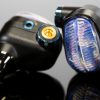






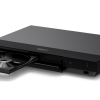
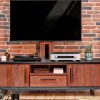

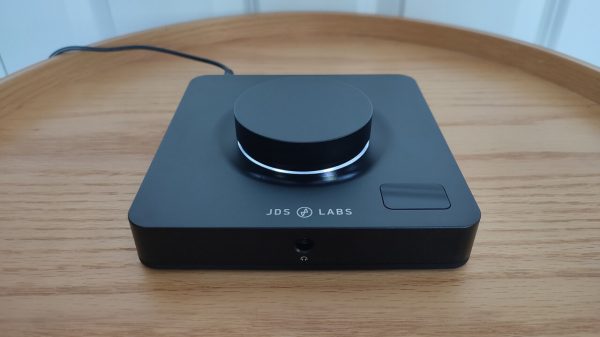


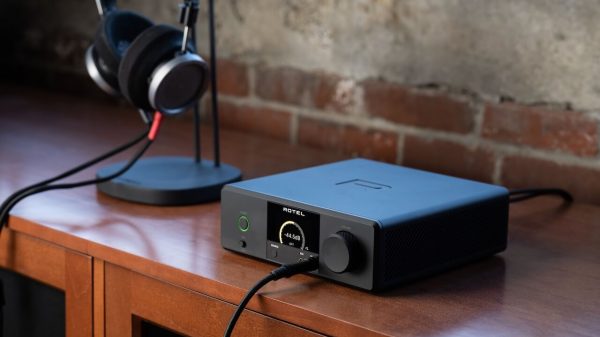
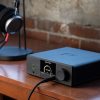
















Peter
December 22, 2021 at 6:46 pm
How did it fare with battery drain? I am considering for my iPod Pro USC-C.
Ian White
December 22, 2021 at 6:55 pm
Peter,
I will find out from Will. I agree that should have been in the review. I will make sure it’s added or that Will answers you directly.
Ian White
W. Jennings
December 23, 2021 at 7:18 pm
Battery drain was similar to the other dongles in the class. I measured the power draw at 130-135mA at 5.03V during use using a Drok USB tester. When paired to my Samsung S20 and iPhone13 I found battery life was roughly an hour less when using the Ru6 than it was with no dongle attached (6 hour listening time).
Alexxx
June 29, 2023 at 1:51 am
No batteries RU6 use USB -C port to connect and power the unit at the same time.
Alex
December 23, 2021 at 1:18 am
I have it and I love it. Without any questions one the best DAC I ever had…how in the world they can make it that small and sell it for so little is beyond me. Alex
Ian White
December 23, 2021 at 12:39 pm
Alex,
We will assume volume and far greater control over production costs at home.
Ian White
W. Jennings
December 23, 2021 at 7:27 pm
It is very much at the top of the class at the moment and I agree that the price is extremely aggressive for what you get in return. It could have easily sold for more,had they decided to do so, but the lower price will help sales volume and may in the long run be more profitable if they can buy parts in larger quantities.
Tim
December 29, 2021 at 9:42 am
Great review, Will, I have put this on my list. I loved the Astell & Kern dongle but lost it after a couple of weeks. I’m still nervous about losing another one. My Chord MoJo is much easier to keep track of.
Ian White
December 29, 2021 at 11:35 am
Tim,
I’ve lost one so far which did not make me happy.
I use the Helm Audio Bolt the most these days and its size and weight make it easy to lose in a bag filled with stuff.
The Cayin is very intriguing for sure.
Ian White
Andre
January 11, 2022 at 6:45 pm
I’ve been looking at Astell and Kern PEE51, Questyle M12, and Cayin RU6.
The minor con I’d say is that I prefer software volume control over hardware control (due to convenience).
But would you say sound wise Cayin RU6 is the way to go? My primary focus is forward female vocal, sparkly treble and boosted bass. Thanks!
Ximian
January 24, 2023 at 7:51 pm
Lovely review..
Do you prefer RU6 in NOS mode or OS mode?
Or does it depend on the source?
My guess is that NOS for high quality source and OS for low quality source, but I may be wrong.
Alexxx
June 29, 2023 at 1:54 am
I have the RU6 and I agree with your review fantastic little dongle DAC, really one of a kind! I would only consider to upgrade to the Chord Mojo 2 IF they added a balance 4.4 connector.
Ian White
June 29, 2023 at 2:27 pm
Alex,
The Cayin is a really solid unit. Excellent value for the money.
Best,
Ian White